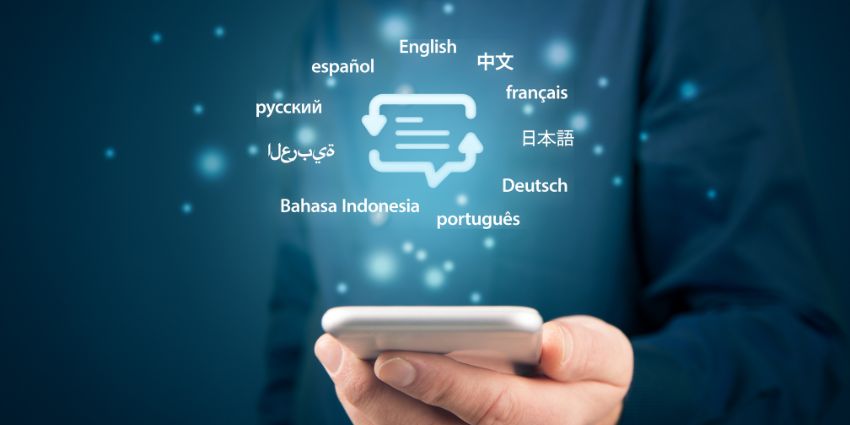You’re at a customer service desk, and a customer approaches, speaking a language you don’t understand. The frustration is mutual. Now, imagine if you or your team could communicate seamlessly in the customer’s preferred language. This is where diversity and inclusion in language capabilities become pivotal.
Bilingual and multilingual abilities are no longer just a nice-to-have but a necessity for delivering superior customer experiences in our increasingly globalized world. In this article, we explain why.
5 Reasons Bilingual and Multilingual Abilities Improve Customer Service
When your contact center agents can communicate in multiple languages, you benefit in several ways.
1. There are fewer misunderstandings in customer interactions
Clarity is crucial, especially in resolving complex issues where precise understanding is necessary. Language barriers often result in miscommunications that can escalate frustrations and prolong problem resolution. By offering service in a customer’s native language, you ensure that both parties are on the same page, reducing errors and enhancing the overall service experience.
2. Your CSAT scores increase
Language is deeply personal, and being addressed in one’s own language creates a sense of comfort and trust. It shows that your company is willing to go the extra mile to accommodate their needs, which can lead to higher satisfaction ratings and positive reviews. Satisfied customers are more likely to return and recommend your services to others, driving word-of-mouth marketing.
3. You’re able to serve a larger market
In today’s global economy, businesses often interact with customers from various linguistic backgrounds. By providing multilingual support, you can cater to a wider audience, including international markets. This expansion not only increases your customer base but also boosts your revenue potential. Additionally, it demonstrates your commitment to inclusivity and cultural awareness.
4. Issues are resolved faster
Multilingual agents can quickly understand and address customer concerns, leading to quicker problem resolution and higher first-contact-resolution (FCR) rates. Language barriers can slow down the troubleshooting process, as customers struggle to explain their issues and agents take longer to comprehend the problems. With multilingual support, agents can immediately grasp the situation and provide accurate solutions, reducing the time customers spend waiting for help.
5. You gain a competitive advantage
By providing multilingual capabilities, you demonstrate a higher level of service that meets diverse customer needs. This commitment to inclusivity not only attracts customers from various backgrounds but also enhances your brand’s reputation. In a competitive market, this edge can be the deciding factor for customers choosing between your service and that of a competitor.
5 Strategies to Train Contact Center Agents in Bilingual and Multilingual Skills
You can hone your agents’ language skills by investing in:
1. Cultural sensitivity training
Enhance language training with cultural sensitivity workshops. Effective communication goes beyond language; understanding cultural nuances is crucial for building rapport and trust with customers. These workshops can cover cultural norms, etiquette, and communication styles, helping agents deliver more personalized and respectful service.
2. Role-playing exercises
Conduct role-playing sessions where agents practice real-life customer scenarios in different languages. These exercises build confidence and practical skills by simulating actual interactions. By facing various customer service situations, agents can develop quick-thinking and problem-solving abilities in a multilingual context.
3. Bilingual and multilingual talent recruitment
During the hiring process, use language proficiency tests and interviews conducted in the target languages to ensure candidates have the necessary skills. Prioritizing language skills in your hiring criteria ensures that you build a foundation of capable agents who can immediately contribute to your multilingual service efforts.
4. Partnerships with language schools or institutes
Collaborate with reputable language schools or institutes to provide specialized training for your agents. These institutions can offer customized courses tailored to the specific needs of your contact center. By partnering with language experts, you ensure that your agents receive high-quality instruction and practical language skills that are directly applicable to their roles.
5. Language mentorship programs
This peer-to-peer learning approach allows less experienced agents to gain practical insights and tips directly from their colleagues. Mentors can provide guidance on handling complex customer interactions, share effective communication strategies, and offer real-time feedback.
How Technology Can Amplify Your Bilingual and Multilingual Capabilities
Technology can be a game-changer in amplifying your team’s bilingual and multilingual capabilities. For example, AI-powered translation tools, for instance, can provide real-time translation, allowing agents to understand and respond to customer queries accurately.
Integrating multilingual chatbots into your customer service platform can handle initial inquiries in various languages, ensuring customers feel understood from the get-go. Additionally, customer relationship management (CRM) systems with multilingual support can track and manage customer interactions in their preferred languages, creating a seamless and personalized experience.
Speech recognition technology has also made significant strides, enabling voice-activated services in multiple languages. This technology can be particularly useful in contact centers, where voice interactions are prevalent.
Challenges of Multilingual Customer Service and How to Navigate Them
While multilingual customer service is essential, it’s also easy to get it wrong. Maintaining consistent quality across all languages can be challenging, as nuances and complexities in language can lead to varied customer experiences. Another challenge is the additional time and resources required for training and technology implementation. It’s crucial to view this as a long-term investment rather than an immediate expense.
You might also encounter difficulties in sourcing and retaining skilled multilingual agents. Address this by creating a supportive work environment that values diversity and provides opportunities for continuous learning and growth.
Remember, the goal is to create a seamless, inclusive, and personalized experience for every customer, regardless of the language they speak.
Did you find this article useful? Follow us on social media for more such insights.







